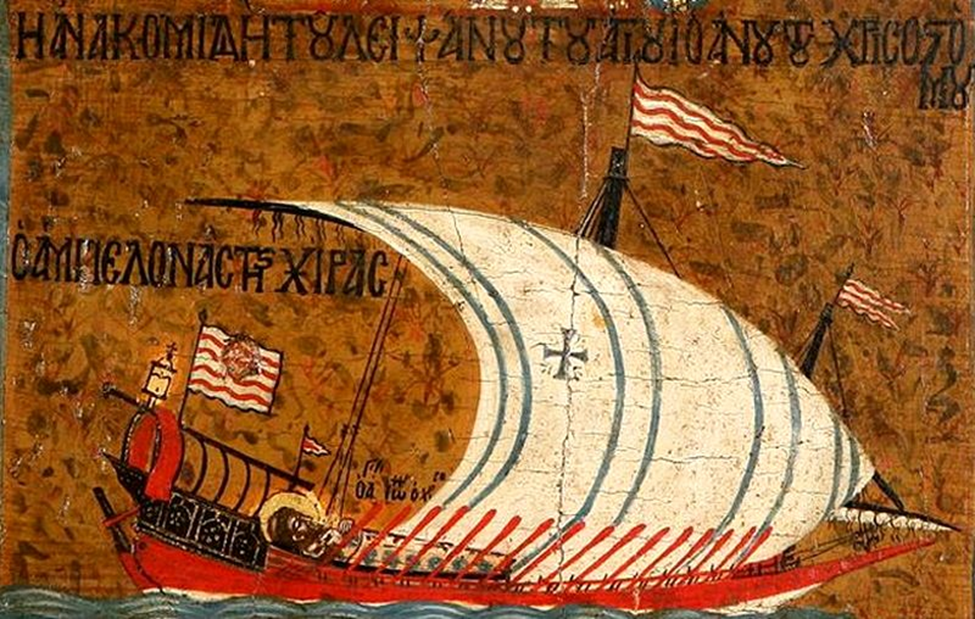After a month's work, I wrote over 120 pages of remarks on the galley proof. I am not sure that my editor will be delighted, but I am happy. The changes I have made became possible due to Grammarly, a particular editorship program, which continues to stun me with its remarkable qualities. I especially like entangled issues when the program suggests splitting the text into more palatable sentences or avoiding the monotony of three successive simple sentences. It does not show how, making the task challenging and exciting.
I am currently collecting data for my new project, with the working title "The Fright and Thrill of Navigation: Seafaring in the Medieval and the Renaissance Mediterranean."
I pick up facts and figures about war galleys, their types, and the armament. I found a fascinating book about the Byzantine navy, "The Age of the Dromon," penned by J.H. Pryor and E.M. Jeffreys. This warship was the stepping stone in developing the West European galleys. By comparing the two models, we can understand the changes in construction and performance.
I have altered my bio on the Academia site. Now, it runs the following:
I am an amateur historian and independent researcher. I am keen on ancient, medieval, and early modern histories. I have authored two books, "Dawn and Sunset: A Tale of the Oldest Cities in the Near East" and "The Enchanting Encounter with the East: Breaking the Ice between the Latin West and the Far East." The former introduces a reader to the complex society built by the Sumerians and the Akkadians. In contrast, the latter tracks the expanding horizons of West European scholars in their quest for the Far East. I am currently engaged in a project studying the development of medieval and renaissance shipping in the Mediterranean.
I also decided to continue my quest for a traditional publisher. I will appeal to new agents with a redesigned query, which says:
I found your name on the list of
literary agents accepting submissions in nonfiction history. I want you to
represent my book, “The Enchanting Encounter with the East: Breaking the Ice
between the Latin West and the Far East.” Though Authorhouse UK, a
self-published agency, has already accepted this work, I would like you to find
a traditional publisher.
“The Enchanting Encounter” follows the thorny
path of European knowledge about the Far East during the end of the Middle
Ages. It conveys the insatiable curiosity and enchantment that engulfed western
literati as they were approaching the Orient--the land of silks and spices,
facts and fiction, legends and lies. The manuscript shows how a sober global outlook
replaced Eurocentric medieval fantasies.
My paper comprises almost 95,000
words and fits into the genre of non-fiction history. It will attract young adults
and adult readers interested in cross-cultural relations, taking them on a guided
tour of the medieval world. I hope to reach an audience including laypeople (such
as college-educated history buffs and high school children) and professionals (students,
teachers, and researchers). The title must also attract libraries, educational
institutions, and museums. The book is a perfect gift for a friend curious
about the Middle Ages and braced for learning new things.
“The Enchanting Encounter” teaches
my readers to be independent and objective, to enhance critical thinking and
curiosity that will assist them in various everyday situations. It also
promotes individual empowerment and self-worth. My thought-provoking story presents
things from several points of view without passing hasty judgments and casts an
innovative look at medieval history. It is an excellent place to start
re-education, launching a rational and mutually respectful debate.
Thorough investigative research set
the scene for “The Enchanting Encounter.” I upload the articles, which are open
for discussions by experts and the general public, on my website.
https://independent.academia.edu/BaizermanMichael
My audience is about
7000 readers from all over the world. I help promote other writers’ papers on
the Academia site, a broad outlet for academic research.
I keep in touch
with my readers by writing a blog http://mikebis.blogspot.com/ which has drawn
about 6,000 viewers around the globe. I also contact multiple followers on
Twitter and Facebook.
I am an amateur historian captivated by ancient, medieval and early
modern civilizations. I have engaged in Internet research for over 18 years and
specialize in writing nonfiction history. Having grown up in Moscow, Russia, I live
in Israel. I am a retired English high school teacher.
I have authored two books:
"Dawn and Sunset: A Tale of the Oldest Cities in the Near East" and
"The Enchanting Encounter with the East: Breaking the Ice between the
Latin West and the Far East." The former introduces a reader to the
complex society built by the Sumerians and the Akkadians. In contrast, the
latter tracks the expanding horizons of West European scholars in their quest
for the Far East. I am currently engaged in a project studying the development of
medieval and renaissance shipping in the Mediterranean.
I am a well-informed autodidact who
does his best to keep abreast of modern science and believes that any standpoint
needs continuous critical revision. I have participated in sundry FutureLearn historical
online courses given by prominent international universities to learn how to
present my content to diverse audiences.
Best wishes,
Michael Baizerman





